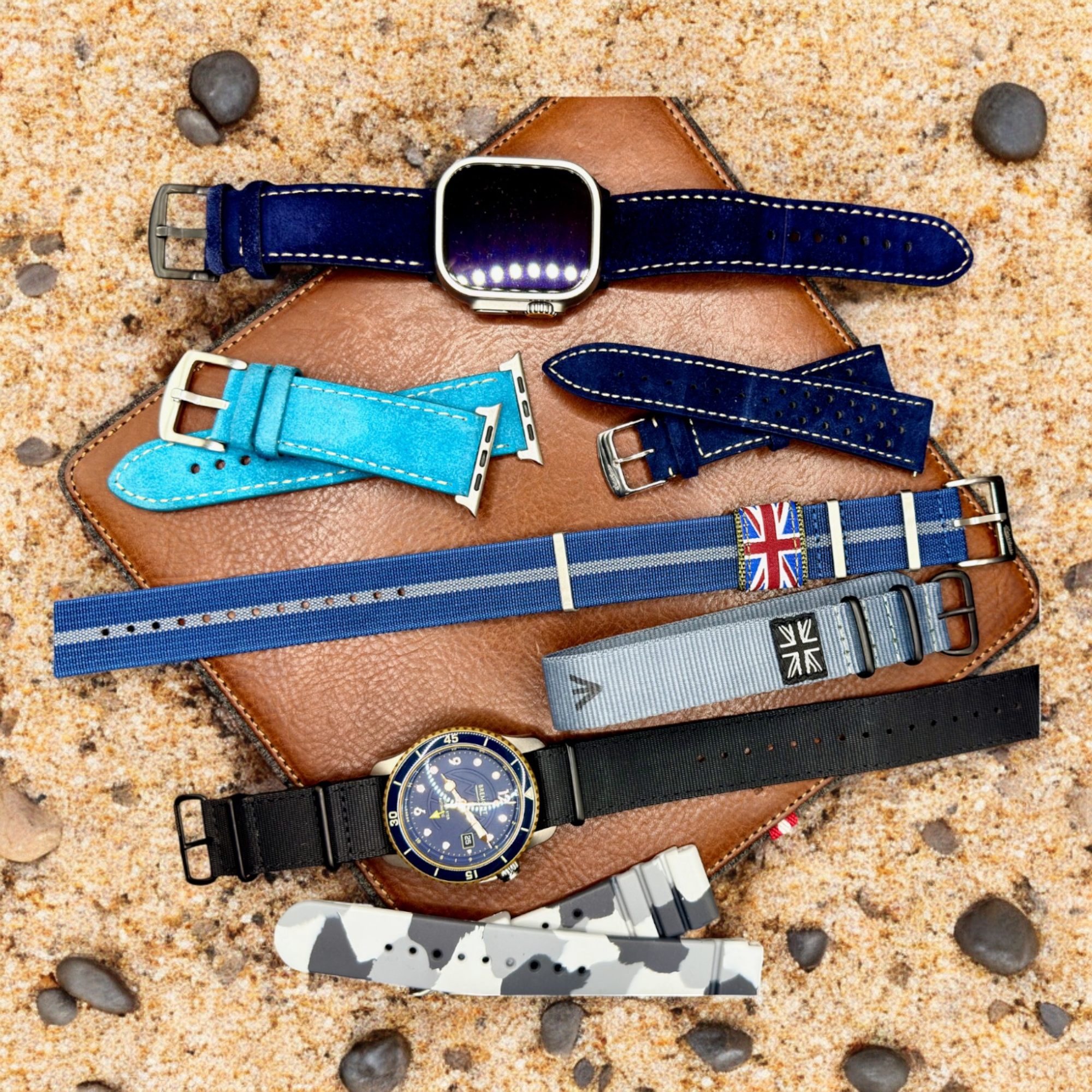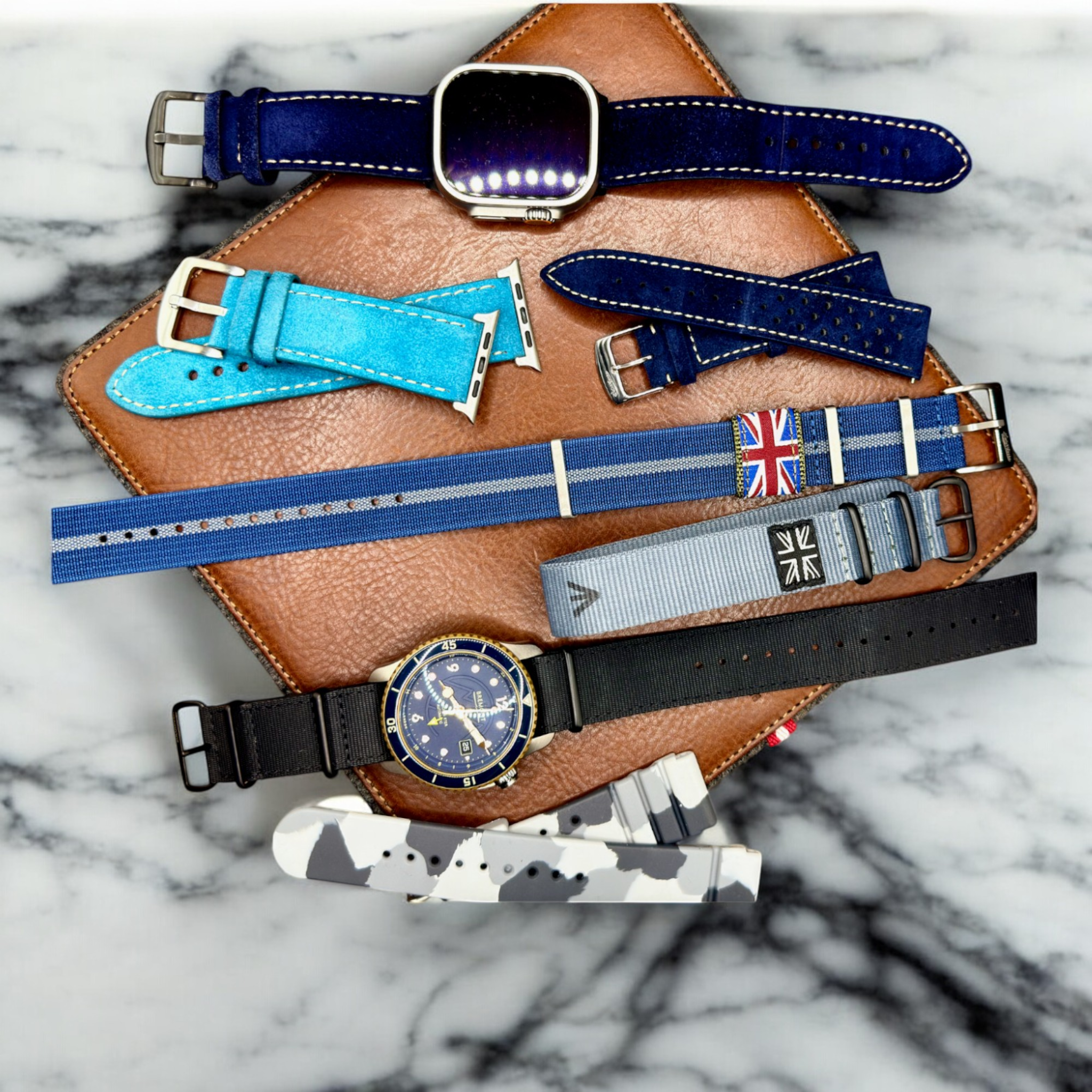A watch strap can make or break your timepiece. It’s what connects your watch to your wrist — and to your personal style. But even the best-made straps won’t last forever if they’re not properly cared for.
Whether it’s leather, rubber, canvas, or steel, how you wear and maintain your strap determines how long it will look good and stay comfortable. Unfortunately, many watch owners unknowingly make small mistakes that dramatically shorten the lifespan of their straps.
Here are the five most common watch strap mistakes — and how to avoid them to keep your strap looking new for years to come.
1. Exposing Leather Straps to Water or Sweat
Leather may be stylish, but it’s also naturally porous. When exposed to water, sweat, or humidity, leather absorbs moisture — causing it to darken, harden, or even crack over time.
Wearing your leather strap while washing your hands, swimming, or exercising accelerates wear dramatically. The salt and oils from your skin can also break down the leather’s surface, leading to discoloration and odor.
✅ How to Fix It:
- Always remove your leather-strap watch before swimming or showering.
- Wipe it dry after wearing, especially on hot days.
- Apply a leather conditioner occasionally to keep it supple and hydrated.
- Rotate your straps — use a rubber or Perlon strap for active days instead.
👉 Try this instead: Eulit Perlon Straps
— breathable, waterproof, and perfect for humid climates.
2. Leaving Your Watch Strap in Direct Sunlight or Heat
Constant exposure to UV rays and heat can fade colours and weaken materials — even high-quality leather and rubber aren’t immune. Sunlight breaks down natural oils in leather, while heat can cause rubber and synthetic fibers to dry out or warp.
If you often leave your watch on the dashboard, by a window, or near heat sources, your strap might be aging faster than you think.
✅ How to Fix It:
- Store your watch in a cool, shaded area when not in use.
- Avoid leaving it in your car or under direct sunlight.
- For display, use a watch box or case with UV protection.
👉 Durable alternative: ZULUDIVER Rubber Dive Straps
— made from Italian HNBR rubber, designed to resist UV, heat, and saltwater.
3. Not Cleaning Your Strap Regularly
A dirty strap doesn’t just look bad — it deteriorates faster. Sweat, dirt, and skin oils accumulate over time, especially on rubber, canvas, and nylon straps. This buildup can weaken the fibers, cause unpleasant odors, or corrode metal parts.
Leather straps are especially sensitive to grime buildup. Even light dust can slowly scratch and dull the surface if left unattended.
✅ How to Fix It:
- Wipe your strap gently with a soft cloth after each wear.
- For rubber or Perlon straps, rinse them under warm water and let air dry.
- For leather, use a leather cleaner once a month — never soak it.
- Avoid harsh soaps, alcohol, or chemicals that strip protective coatings.
👉 Tip: A few seconds of post-wear cleaning can add months to your strap’s life.
4. Over-Tightening or Bending the Strap
A tight strap might feel secure, but it puts unnecessary stress on the material — especially near the holes and buckle area. Constant bending or stretching weakens stitching, deforms the shape, and leads to cracking or tearing.
You may also notice premature creases, which not only affect comfort but make the strap look prematurely aged.
✅ How to Fix It:
- Adjust your watch for a snug but breathable fit — you should be able to slide one finger between your wrist and strap.
- Rotate between straps to reduce wear on one spot.
- For long-term durability, consider reinforced or double-layer straps, like WatchandStrapco’s Paris Collection.
5. Ignoring Hardware and Spring Bars
Even if the strap itself is premium, weak hardware can cut its life short. Bent spring bars, worn buckles, or rusty metal parts not only damage the strap but can cause your watch to fall off entirely.
Moisture and corrosion are the silent killers of metal components — especially in humid climates like Southeast Asia.
✅ How to Fix It:
- Inspect your spring bars regularly — replace them every 6–12 months if worn.
- Clean the buckle and lugs occasionally using a soft brush and cloth.
- Choose straps with solid stainless steel or brass buckles, not hollow ones.
👉 Example: Watchandstrapco Leather Straps
— each comes with high-grade hardware built to last.
Bonus Tip: Rotate Your Straps
Even the best strap needs a break. Rotating between a few favourite straps helps distribute wear evenly and extends the life of each one. It also keeps your look fresh and gives your skin time to breathe.
TAGSTHX offers a curated collection of interchangeable straps compatible with most major watch brands — so you can easily switch from classic leather to sporty rubber or casual canvas without tools.
🔗 Explore our full strap collection here
.
How Long Should a Watch Strap Last?
It depends on the material and how well it’s maintained.
- Leather straps: 1–3 years with care
- Rubber straps: 2–5 years (premium HNBR can last longer)
- Nylon/Canvas straps: 2–4 years depending on use
- Metal bracelets: 5+ years with cleaning
Remember — the lifespan isn’t fixed. The way you wear, store, and care for your strap determines whether it lasts a few months or many years.
Final Thoughts: Care Equals Longevity
Your watch strap deserves as much attention as your watch. It’s the detail that completes your look — and protects your investment.
Avoid these five common mistakes, and you’ll be rewarded with straps that stay strong, stylish, and comfortable far longer than average.
🛒 Upgrade your strap and learn how to care for it the right way — explore our full range of premium watch straps at TAGSTHX.com


